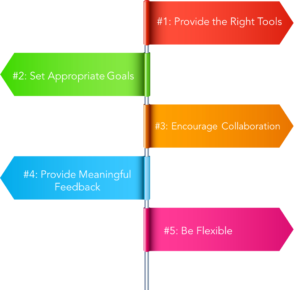One of the greatest questions constantly facing business owners, managers and individual employees is how to improve productivity at work. The theme is a multi-billion-dollar industry and has spawned thousands of help books and speaker tours, yet the solution might actually be one of the relatively simplest to implement – mindfulness. Mindfulness is a relatively broad term that revolves around bringing one’s mind to live in the moment through meditation, breathing techniques and other methods.

Millions of people around the world have been experiencing the advantages of mindfulness for productivity, with its ability to focus the mind and reduce anxiety, allowing them to dedicate themselves to the task at hand. Mindfulness has many benefits beyond one’s professional life, but for the moment we’ll take a look at how it can boost productivity.
How to Improve Productivity with Mindfulness
- Figure out what task you’re doing and do that
This might seem like very simple advice, yet all too often we don’t follow it. Whatever the task is that you are doing, practice being very strict with not letting thoughts of any other task creep in, focus solely on what’s in front of you, only shifting focus when you are finished.
- Have your activities planned
One of the biggest benefits of mindfulness at work is better task planning, which allows for better focus. Of course, it’s a lot easier to put other tasks out of your mind when you can trust in the fact that you know exactly what’s coming up next and for the rest of the day or week.
Scheduling and effectively task planning are tasks in themselves and should be given the proper time and place in your schedule. An effective method is to wind down from work by taking the last 10/15 minutes of your working day to go through how your schedule went and what it should look like tomorrow.
- Take the time to center yourself
One of the best ways of using mindfulness for productivity is by employing the technique of centering yourself in the time and space where you are. Close your eyes, count five inhales and exhales and do a run-through of the situation.
For example: “It’s about 3.30. My hands are on my desk, my feet are on the ground and I’m sitting in my chair. The task at hand is writing a batch of outreach emails for Example Engineering. I’m going to open my eyes now and get to work.” The first part affirms that you are at work, not wherever your brain imagines you ought to be, mentioning the task centers your focus and the final sign-off is the call to action your brain needs to kick into gear.
- Visualize the task
Visualization is one of the core tenets of mindfulness and is quite simple to master. For professional situations, you can visualize what doing the work looks like or how a final report or graphic will actually appear in the end. It is helpful to visualize the process of performing some task and also what it will be like when it is completed, either attaching a file and sending an email or presenting a project’s business case. Visualizing a successful endeavor helps you focus on what you’re working towards.
- Tackle anxiety head-on
Many people are struck with anxiety on a relatively regular basis. It can gnaw away at the back of your mind, causing stress and even be completely debilitating, preventing you from doing any work at all and exacerbating the situation. While it can seem easier to just ignore anxiety and to try to put it out of your mind, mindfulness can actually help you address and process that elephant in the room.
For example, if it’s stress that your schedule is too packed and you won’t possibly get it all done, create a list of possible solutions such as asking for help or requesting a deadline be pushed back. It is also important to remind yourself that your capabilities are finite and that’s ok – you can only do one thing at a time and to do that the best you can.
Using project management software can be of great benefit when reviewing and planning your schedule, getting on task, and visualizing your work. If you’d like to see how, get in touch with Planview AdaptiveWork to organize for a free guided demonstration.










